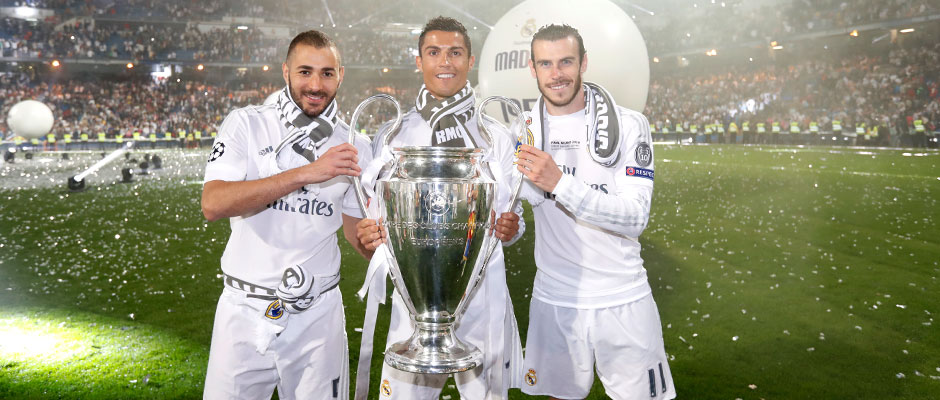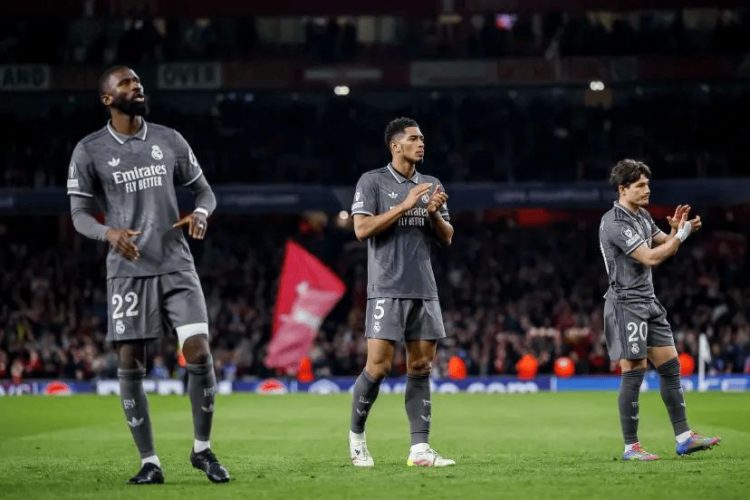Introduction
For over a century, Real Madrid has been one of the most successful and iconic football clubs in the world. With 13 UEFA Champions League titles, 34 La Liga trophies, and a rich history of global football domination, the club is synonymous with winning. Real Madrid’s enduring success has been built on legendary players, strategic signings, and a never-say-die mentality that has allowed the club to overcome setbacks and return to the top time and again.
However, the post-Cristiano Ronaldo era has presented Real Madrid with new challenges. With the Portuguese forward’s departure in 2018, the club entered a period of transition, where new faces needed to rise to the occasion to maintain the club’s elite status. This has triggered a rebuilding plan, spearheaded by Florentino Pérez, the club’s president, and supported by head coach Carlo Ancelotti.
The question remains: Can Real Madrid’s rebuilding plan succeed? Can the new generation of stars, including Vinícius Júnior, Rodrygo, and Eduardo Camavinga, live up to the high expectations placed on them and lead the club to more European glory? In this article, we will analyze Real Madrid’s current rebuilding phase, the development of their rising stars, and whether they have what it takes to challenge Europe’s elite once again.
Section 1: The Legacy of Real Madrid – A Club Built for Glory
1.1 Real Madrid’s Historical Dominance
Real Madrid’s legacy in European football is unparalleled. The club has captured a record 13 Champions League titles, with their dominance in the competition being a key part of their identity. The team’s ability to build successful teams over generations, from the Galácticos era with Zinedine Zidane, Luis Figo, and David Beckham, to the more recent triumphs with Cristiano Ronaldo, Sergio Ramos, and Karim Benzema, has set the benchmark for success.
Real Madrid’s philosophy of winning has permeated the club’s operations, from their youth academy (known as La Fábrica) to their elite recruitment strategy. The club has always been able to attract world-class talent, and even when facing setbacks, it has maintained its position as a dominant force in both La Liga and European competition.
- The Zidane Era: Under Zinedine Zidane, Real Madrid enjoyed an unforgettable period of success, winning three consecutive Champions League titles between 2016 and 2018. Zidane’s tactical discipline, combined with the formidable power of Cristiano Ronaldo, Karim Benzema, and Luka Modrić, helped Real Madrid solidify their dominance on the European stage.
- The Post-Ronaldo Transition: After Ronaldo’s departure to Juventus in 2018, Real Madrid entered a challenging phase. While Gareth Bale and Karim Benzema continued to lead the charge, the team struggled to replicate the same level of consistency and firepower. A few seasons of disappointment followed, especially in the Champions League, where they failed to make significant progress in the knockout stages.
Section 2: The Rebuilding Plan – A New Era for Real Madrid
2.1 The Shift in Transfer Strategy
Following the departure of Cristiano Ronaldo and the growing realization that the club needed to plan for the future, Florentino Pérez and Real Madrid shifted their transfer strategy. Rather than focusing solely on the acquisition of big-name superstars like Kylian Mbappé or Neymar, the club has begun focusing on young talent with potential to lead the club for the next decade.
- The Galácticos 2.0?: In recent years, Real Madrid has signed several young, exciting players, aiming to create a new generation of Galácticos. Players like Vinícius Júnior, Rodrygo, and Eduardo Camavinga have been brought into the fold, all of whom show immense promise and have already displayed flashes of brilliance on the big stage.
- Key Signings: While Kylian Mbappé’s proposed move to the club has not materialized as of yet, Real Madrid’s strategy has been to invest heavily in youthful talent. In addition to the aforementioned players, the club also signed Antonio Rüdiger and Aurélien Tchouaméni to bolster their defense and midfield respectively, adding a layer of depth to their squad for the coming years.
- Sustainability and Development: Real Madrid has also made efforts to balance their books and ensure the club remains financially sustainable. This includes reducing wage bills, managing player contracts wisely, and focusing on developing young stars from their youth academy (such as Antonio Blanco, Marcos Llorente, and Brahim Diaz).
2.2 The Rise of the New Generation
The success of Real Madrid’s rebuild will ultimately depend on how their young stars develop and step into leadership roles. Players like Vinícius Júnior, Rodrygo, and Eduardo Camavinga are seen as the future of the club, and they must now take on the responsibility of leading the team both domestically and in Europe.
- Vinícius Júnior: The Brazilian winger has been one of the standout performers for Real Madrid in recent seasons. His pace, technical ability, and flair make him a constant threat on the left wing, and his goal-scoring performances have been crucial in the team’s success. He played a major role in their 2022 Champions League victory, scoring critical goals in the knockout stages, including a stunning finish in the final against Liverpool. If Vinícius continues his upward trajectory, he could soon become one of the best wingers in the world and the face of Real Madrid’s next era.
- Rodrygo: Like Vinícius, Rodrygo is another Brazilian prodigy who is developing into a key player for Madrid. His technical skill, composure in front of goal, and intelligence on the ball make him a dangerous attacking option. Rodrygo also scored vital goals in the 2022 Champions League, including a match-winning brace against Chelsea in the quarterfinals. His ability to perform in high-pressure moments suggests that he could be an integral part of Real Madrid’s future success.
- Eduardo Camavinga: One of the most exciting talents in Europe, Camavinga joined Madrid in 2021 from Rennes in France. The French midfielder is known for his dynamism, intelligence, and versatility in both defense and attack. At just 20 years old, he already shows maturity beyond his years and has been a key player in the midfield, especially in big matches. Camavinga’s potential to grow into one of Europe’s best midfielders will be crucial for Real Madrid as they look to dominate the midfield for years to come.
- Jude Bellingham: One of the most anticipated signings for Real Madrid, the arrival of Jude Bellingham from Borussia Dortmund in 2023 has added further excitement to the squad. The English midfielder brings creativity, leadership, and maturity, and his ability to dictate play will be essential as the team transitions into the next era. Bellingham has already shown his quality in the La Liga and Champions League, and many view him as a future key figure at the Bernabéu.
2.3 Coach Carlo Ancelotti’s Role in the Rebuild
While the new generation of players is crucial to the rebuilding process, Carlo Ancelotti’s role as head coach cannot be overstated. Ancelotti has already led Real Madrid to a La Liga title and Champions League glory since his return to the club in 2021. His calm demeanor, tactical astuteness, and ability to manage big personalities have helped to bridge the gap between the experienced core and the new generation.
- Tactical Flexibility: Ancelotti is known for his flexibility in terms of tactical setups, and his ability to adapt his formation based on the players at his disposal has allowed him to get the best out of both young players and seasoned veterans like Luka Modrić and Karim Benzema. The Italian coach’s ability to mix youth with experience will be vital as Real Madrid looks to challenge for domestic and European honors.
- Developing Young Talent: Ancelotti has a proven track record of nurturing young players and giving them opportunities to prove themselves in big matches. His ability to integrate the likes of Vinícius Júnior and Rodrygo into his system will be key to Real Madrid’s future success. His management style will allow the team to continue evolving while maintaining the club’s tradition of winning football.

Section 3: The Road Ahead – Can Real Madrid Return to the Top of Europe?
3.1 The Challenges in European Competition
While Real Madrid’s rebuilding plan has been promising, the road to European glory remains challenging. The Champions League is more competitive than ever, with teams like Manchester City, Bayern Munich, Paris Saint-Germain, and Chelsea all having world-class squads that are ready to compete at the highest level.
- Competitive Rivals: Real Madrid’s biggest challenge will come from teams with similar ambitions. Manchester City, under the guidance of Pep Guardiola, is one of the most well-coached and well-funded teams in Europe. Their signing of Erling Haaland has further strengthened their attack, and they will be the team to beat in the coming years. Additionally, Bayern Munich remains a dominant force, while Liverpool, PSG, and Chelsea are also formidable contenders.
- Key to Success: Real Madrid must continue to evolve both tactically and mentally to compete with these teams. The team’s blend of experience and youthful talent will be a major asset in this regard, with the likes of Vinícius Júnior, Rodrygo, and Camavinga potentially leading the charge in big European nights.
3.2 Can the Rebuilding Plan Bring Long-Term Success?
The answer to this question ultimately depends on how well the new generation of stars can handle the pressure of playing for a club like Real Madrid, with its rich history and lofty expectations. While the club has made significant strides in rebuilding, it will need to stay patient and continue developing its younger players to sustain long-term success.
- Building a New Legacy: Real Madrid’s future success will be built on the foundations laid by these young stars. The hope is that players like Vinícius, Rodrygo, Bellingham, and Camavinga will rise to the occasion and become the next generation of club legends. Their ability to lead Real Madrid back to European glory will define the club’s place in history for the next decade.
Conclusion: A Bright Future for Real Madrid?
Real Madrid is in the midst of a rebuilding process, one that is designed to return the club to the pinnacle of European football. With a combination of exciting young talent, such as Vinícius Júnior, Rodrygo, and Camavinga, alongside experienced leaders and a world-class coach in Carlo Ancelotti, the club has laid the groundwork for future success.
The challenge remains significant, particularly with the rise of other top clubs, but Real Madrid’s rich history, culture of winning, and commitment to developing talent offer hope that they can return to their former glory. Can they reclaim their place at the top of European football? Time will tell, but the future looks promising, and the club’s rebuilding efforts could soon yield another chapter of Champions League triumphs and La Liga dominance.


































Discussion about this post